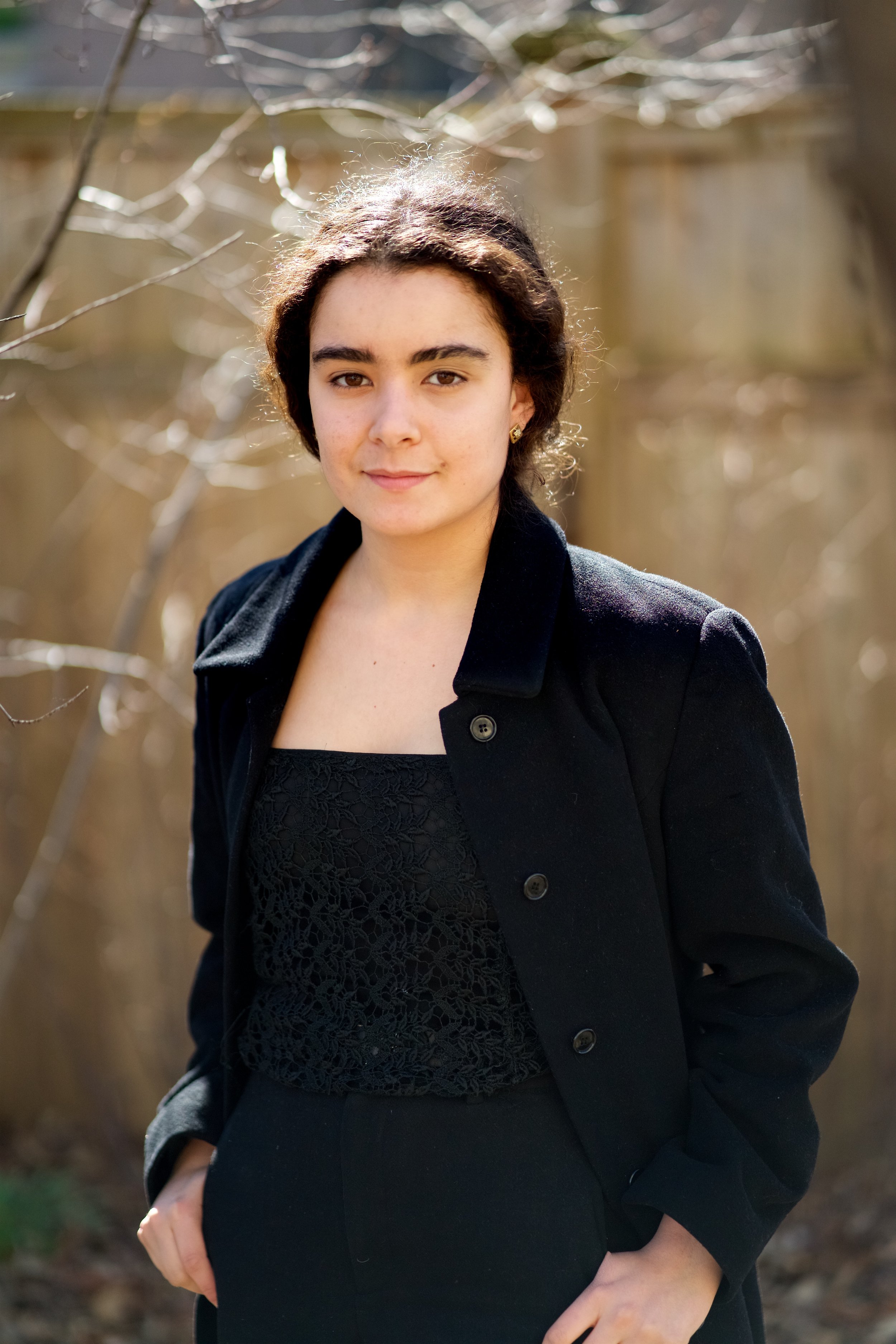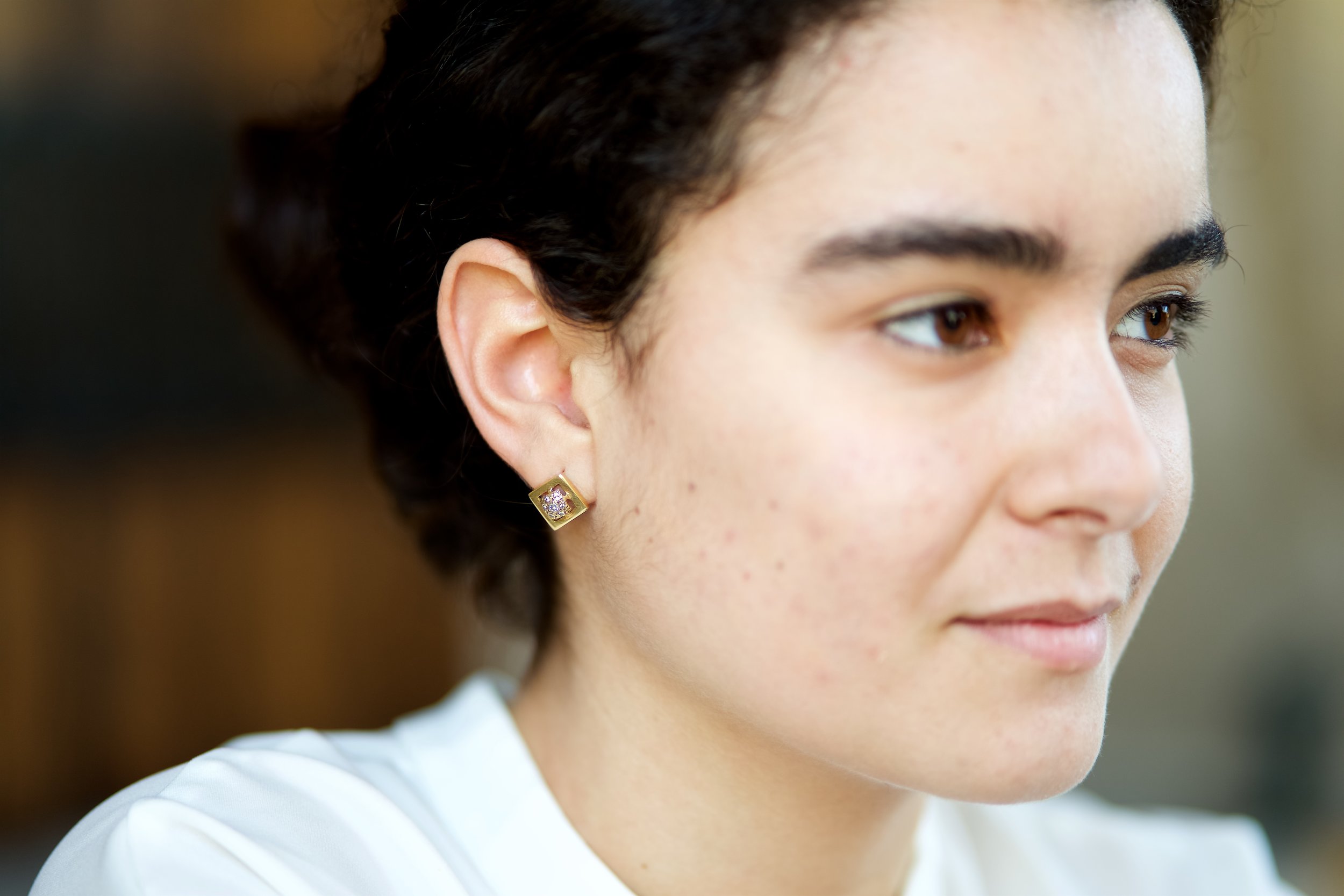Quad Style: Cecília Resende Santos
Meet Cecília Resende Santos, a fourth-year Art History major focusing on 20th century architecture and urbanism. On campus, she's a part of Kitchen Sink.
“Fashion is a daily, non-consequential way of experimenting with aesthetic preferences and, if you will, projected versions of oneself.”
For this look, I am wearing a Worthington wool coat (thrifted), a Zara Basic ribbed mock neck long-sleeve shirt, a black lace top passed down from my mom (probably custom-made) and Uniqlo wool cropped wide-leg trousers.
How would you describe your personal style?
I came to think of my style as prioritizing shape–the geometry of the clothes and its relationship to the body–wearing often mono- or dichromatic outfits and primary colors. I almost never wear patterns. However, I have recently started thinking about texture, which can be very rich and appealing combined with form, for example, the pairing of a ribbed shirt with ribbed trousers, the embroidery-like texture of the top I inherited from my mom, or just the thickness of a fabric. Eventually, I want to find a way to reincorporate more color and patterns. And I tend to dress more put-together than I actually am.
Where do you find style inspiration?
I gather fashion inspiration in a variety of ways, none of which are particularly intentional or conscious. I like looking at people on the street, observing people I know, and artists and professionals I admire, as well as occasionally going through Instagram and labels I know. The latter two often have very specific, well-defined and self-aware style, and it is interesting to observe them as statements and micro-verses from which to abstract principles and take inspiration. Ads in fashion and art magazines are also a source.
These earrings were maed by my stepmother’s mother, São Paulo-based jewelry designer Lia Barrella.
Where do you like to shop?
Recently, I have mostly been shopping in thrift stores. Some of my favorite items come from thrift shops in Chicago and other cities. I tend to shop when I am traveling, as I walk in the city and perhaps to take something from a place (the black flowy trousers, for example, are from a thrift store in Brussels). Other favorites come from my mom or were made by my great-aunts–they are singular items made with great craft. But I have shopped for basics at Uniqlo, Everlane, sometimes Zara, and places with petite sizes.
I'm black ribbed flowy wide-leg trousers (thrifted), a Uniqlo white mock neck short-sleeve shirt and Miu Miu shoes (thrifted).
Do you have any fashion regrets?
I wouldn’t wear much of the stuff I wore as recently as my first year of college, but I don’t really have regrets. I understand that my relationship to fashion, my taste and my self-perception have changed, and fashion choices reflect that.
What is your relationship to fashion? Has it changed over time?
My relationship to fashion has changed dramatically over time. Until I was maybe 14, I didn’t care at all about fashion–almost to the point of condemning it. Most schools in Brazil require uniforms, so this wasn’t a big part of the day-to-day in any case. After that, in high school, as uniforms were no longer required, my attitude to fashion began to change. I became mostly concerned with wearing something composed, but neutral, making no statements. It was only in the end of high school and in college, when I moved out of my parent’s house in early 2014, that I started experimenting with outfits and developing some sense of personal style.
In the past two years my style has stabilized somewhat to its current version, but what is interesting and entertaining about fashion is the possibility of experimenting, making new combinations with the items I already own, and rediscovering preferences (or challenging them) when looking through magazines or thrift-shopping.
Why is fashion important to you?
Fashion is a daily, non-consequential way of experimenting with aesthetic preferences and, if you will, projected versions of oneself. For me, the considered thoughtlessness of it is part of a healthy diet of creativity, intellectuality, and amusement. And it has a real relationship with one’s self-confidence and perception of one’s own image – which I think can be harmful at times, but at other times can be very useful.
All images courtesy of Angela Fung. Check out more of her photography here.

















